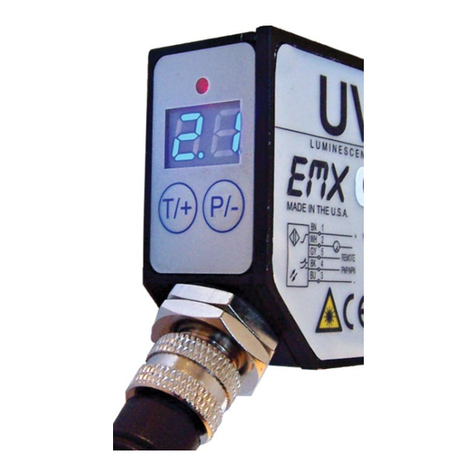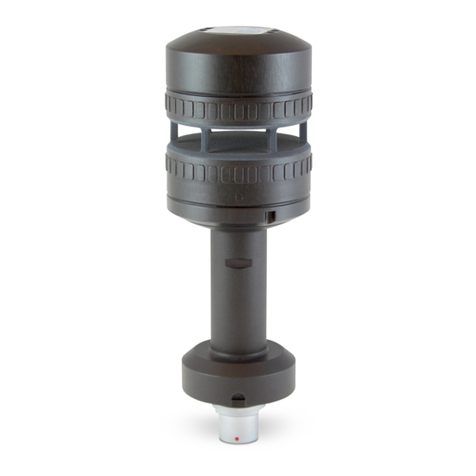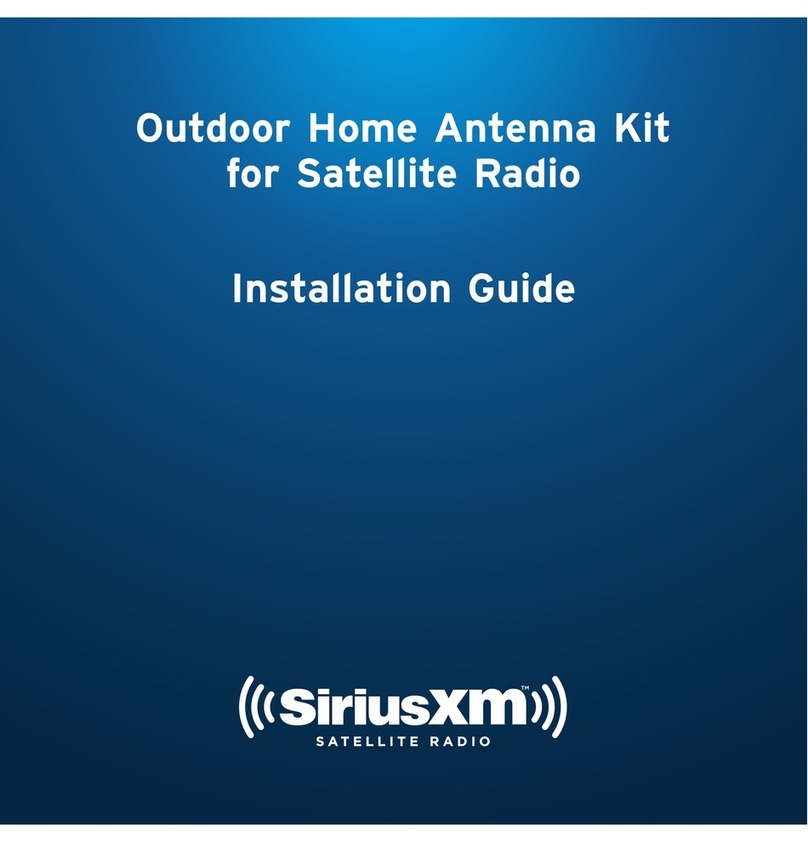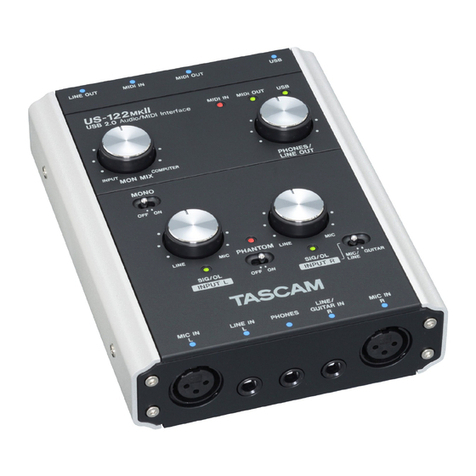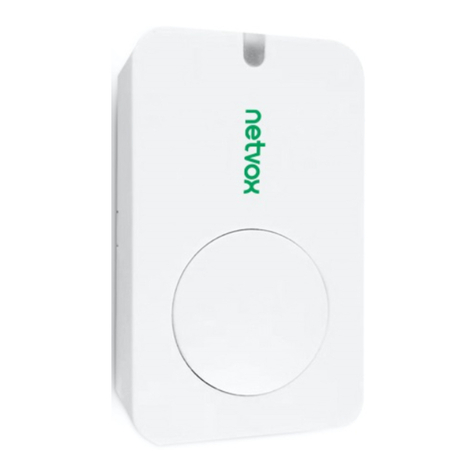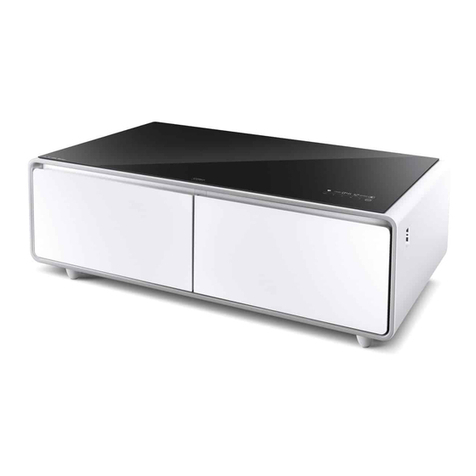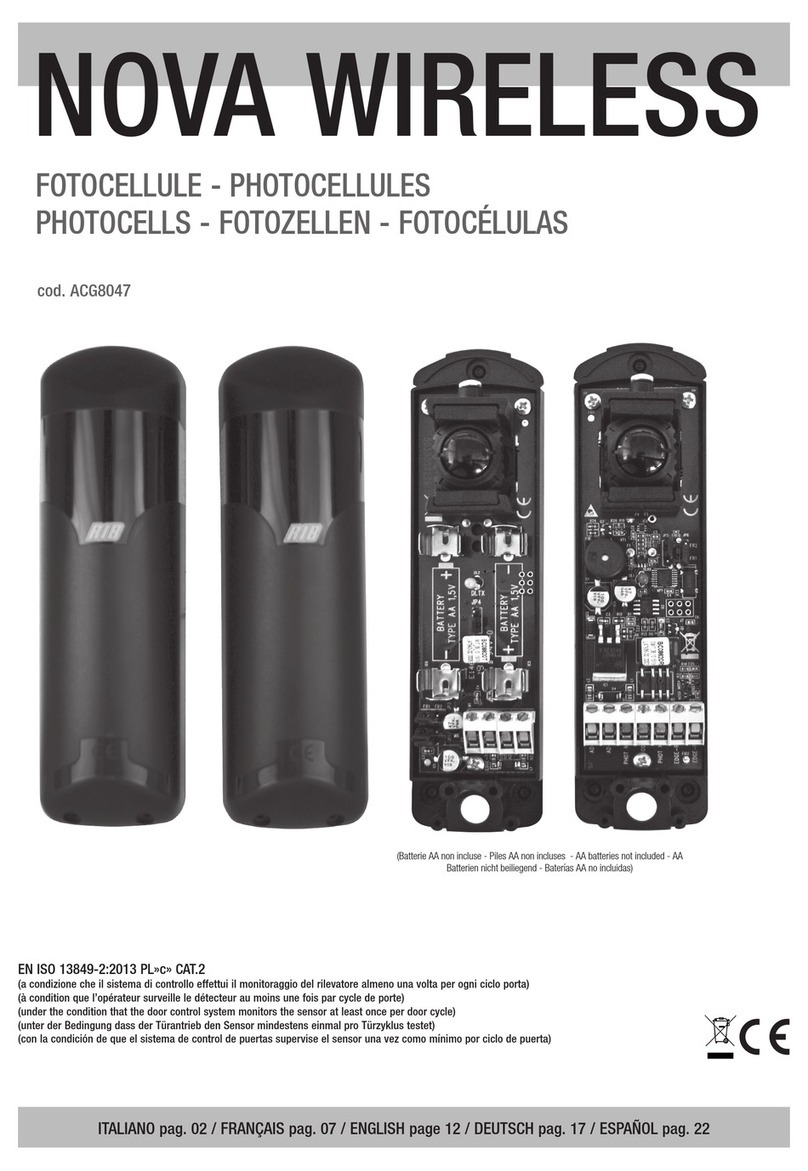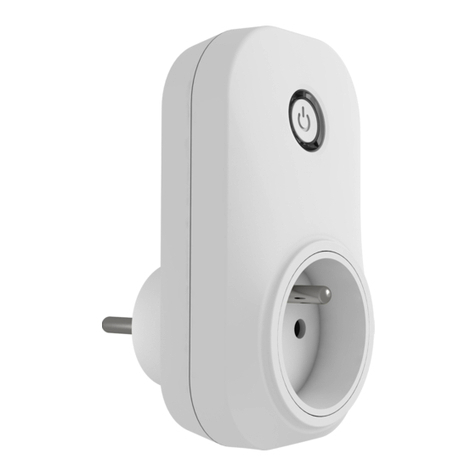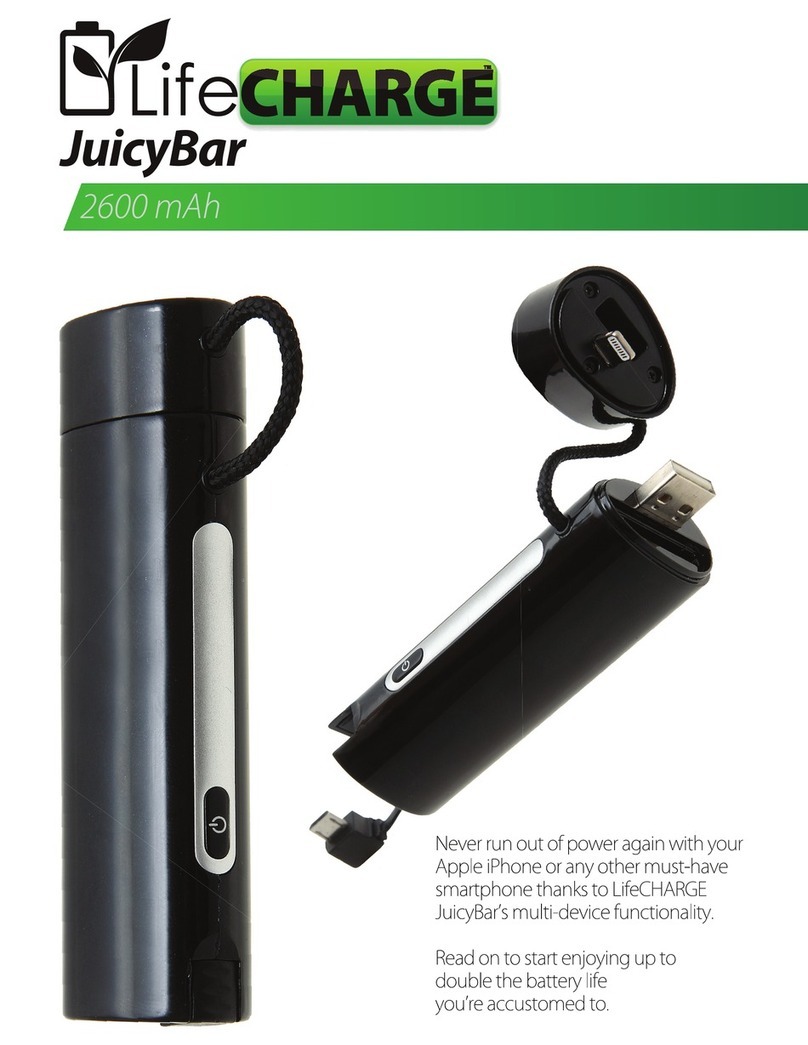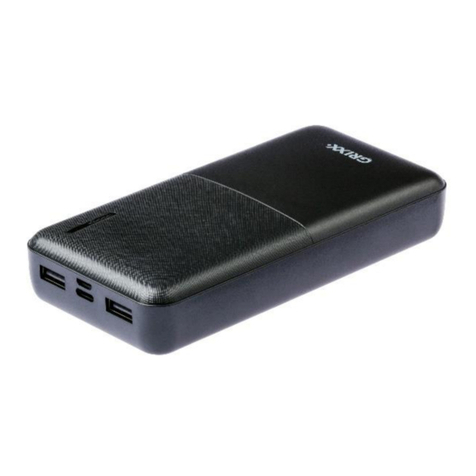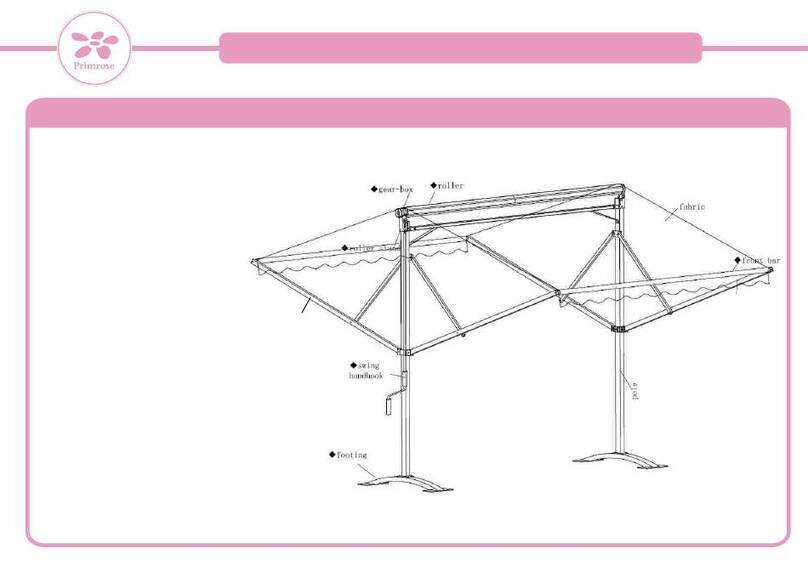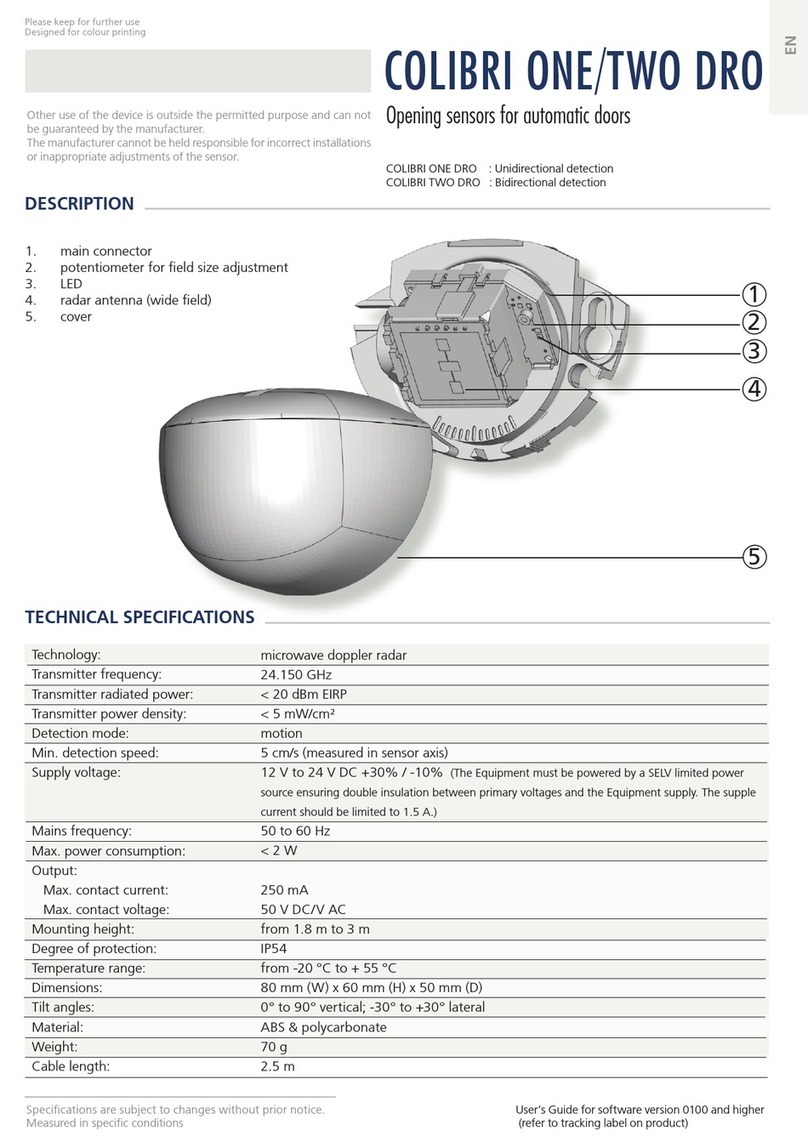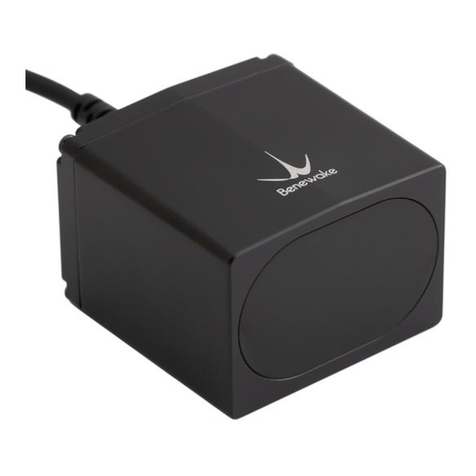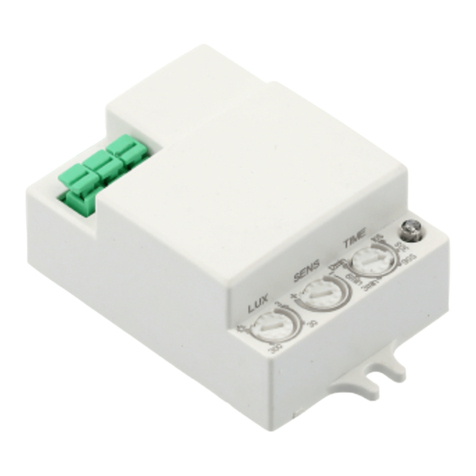EMX Industries UVX-100 User manual

O P E R A T I N G I N S T R U C T I O N S
Operating Instructions
4564 Johnston Parkway, Cleveland, Ohio 44128
P. 800 426 9912 F. 216 518 9884
Technical Support: technical@emxinc.com
www.emxinc.com
UVX-100
L u m i n e s c e n c e S e n s o r

UVX 300 Operating Instructions 2
Document no. 10010304
Cautions and Warnings
CAUTION: The discrete output must not be connected to outputs from
other sensors (i.e. outputs from multiple sensors must not be connected in
parallel). Parallel connections may damage sensor output circuitry.
IMPORTANT:
This product is an accessory or part of a system. Always read and follow the manufacturer’s
instructions for the equipment before connecting this product. Comply with all applicable
codes and safety regulations. Failure to do so may result in damage, injury or death.
Langue Française Attention:
•La LED UV rayonne la lumière UV intense lors du fonctionnement.
•N'examinez pas directement la lumière UV lors du fonctionnement de dispositif.
Ceci peut être nocif aux yeux, même pour la brève période due à la lumière UV intense.
•Si le visionnement de la lumière UV est nécessaire, employez svp les verres filtrés UV pour
éviter des dommages d'oeil par la lumière UV.
•Évitez l'exposition directe d'oeil à la lumière UV.
Subsistance hors de l'extension des enfants.
Certifications (CE, CSA, UL)

UVX 300 Operating Instructions 3
Document no. 10010304
Product Overview
The UVX 100 sensor effectively detects UV luminescent materials and markers. The modulated UV
light source in the UVX 100 is directed toward a target and the visible light, resulting from the
fluorescence of the material, is reflected back to the sensor. When the reflected light level exceeds the
threshold the discrete output changes state. Due to the fast response of the sensor, it is suitable for
use in high-speed applications. The 50mm lens accessory allows for very small spot size for fine
resolution applications. The sensor provides both an analog and a discrete output. The analog output
signal has a 0 to 5 V range with 20mV resolution. A PLC or a computer can be used to process the
analog output and monitor the status of the discrete output signal.
The UVX 100 is a reliable, compact sensor with long range sensing capabilities. Two seven segment
displays provide visual representation of the relative intensity from 00 to 50. Easy two step sensitivity
and 3 LED intensity settings provide for flexible operation over wide range of distances and materials.
Dimensional Details

UVX 300 Operating Instructions 4
Document no. 10010304
Specifications
Specifications
UV light source
370nm UV LED, min. 100,000 hours
LED Intensity
3 levels (low, medium, and high)
Relative Intensity Display Range
00 to 50
Sensitivity
X1, X10
Detection Range
Up to 36 inches (900mm)
Switching Frequency
6 kHz
Brightness level
Two 7 segment digits
Brightness threshold
Two 7 segment digits
Analog Output
0-5 V (20mV resolution)
Digital Output
Auto-Detect PNP /NPN
Extend Output Pulse
0 -90 mS (10 steps)
Output Function
NO/NC selectable
On/Off Delay
<200uS
Security
Remote LOCK / UN-LOCK
Power indicator
Green LED
Detect indicator
Red LED
Programming indicator
Yellow LED
Data retention
EEPROM non-volatile memory
Dimensions
2.0”(51mm) x 2.4”(61mm) x 0.9”(23mm)
Weight
0.21 lbs. (95 g)
Supply Voltage
10…24 VDC
Operating Current
60mA
Short Circuit Protection
Yes (Outputs)
Overload/Reverse Polarity Protection
Yes(Supply Voltage)
Operating temperature
-20ºC…50ºC
Storage temperature
-20ºC…70ºC
Housing
Metal alloy
Mechanical protection
IP65 NOT FOR PRESSURE WASHDOWN

UVX 300 Operating Instructions 5
Document no. 10010304
Operation
QUICKSTART GUIDE
1. The display range is 00 through 50. The decimal points indicate the LED intensity level. The
RED LED above the display indicates that the intensity level exceeds the threshold setting.
2. Connect cable to power supply observing correct polarity. Reference wiring diagram.
3. NOTE: The remote lock input, pin 5 on the connector (yellow wire), must be left unconnected or
pulled to ground to allow operation of keys on sensor.
4. Apply power; sensor will initialize and perform its power up sequence.
5. The relative intensity will be displayed. By aiming the sensor away from any objects the display
will indicate 00. Aim the sensor at your target or a white piece of paper and the display will
indicate an intensity measurement. Move the target further away from the sensor to decrease
the intensity level.
6. Press and release either key located below the display to view the current threshold setting.
While the current threshold is shown on the display, press the + or –key to increase or
decrease the setting, then wait several seconds for the sensor to return to the normal intensity
display mode.
7. User programmable parameters are discussed in detail in the following sections.
OPERATION
Power up
Upon power up, the sensor initializes by turning on all segments on the display and sequencing
through red, yellow and green on the status LED located above the display.
Intensity display mode
During normal operation the sensor display will indicate the relative intensity of a target within
the viewing area. The range of the relative intensity display is 00 through 50. The decimal
points on the display indicate the LED output intensity. No decimal points indicate low, one
decimal point indicates medium and two decimal points indicate high intensity.
Threshold
When the relative intensity level exceeds the threshold setting the red status LED will turn on
and the discrete output will activate, indicating detection of the target. When the relative
intensity level drops below the threshold (as determined by the hysteresis setting), the red LED
will extinguish and the discrete output will de-activate. The threshold setting allows the user to
select the detection level. The default setting is 15.
While the current threshold is shown on the display, press the + or –key to increase or
decrease the setting, then wait several seconds for the sensor to return to the normal intensity
display mode.

UVX 300 Operating Instructions 6
Document no. 10010304
Operation (Continued)
Local Lock
The local lock feature allows the sensor to be locked out, preventing adjustments by
unauthorized personnel. To lock the sensor, press the P/-and T/+ buttons for 3 seconds until
LL is displayed. To un-lock the sensor, press the T/+ and P/-for 3 seconds until LL is not
displayed. While the sensor is locked, pressing either P/-or T/+ will result in LL (Local Lock)
indication on the display.
Programmable Parameters
All adjustments made to these parameters are stored in memory and are retained when power is
removed. To enter programming mode press and hold the P/-key for several seconds, the LED
intensity setting will be displayed. Press and release the P/- key to scroll through the various settings.
Press and release the T/+ key to change a particular setting. Press and hold the P/-for several
seconds to return to the normal intensity display mode. The user programmable items are described
below.
LED Intensity Level (U)
The LED intensity is indicated on the display as U1, U2 and U3 for low, medium and high
intensity. Press and release the T/+ key to toggle through the 3 intensity levels. The default
setting is U2, medium intensity.
Hysteresis Level (H)
The hysteresis setting is indicated by H0 through H9. The hysteresis level is how far below the
threshold the signal must fall to de-activate or un-detect. The hysteresis can be set from 0 to 9.
For example, if the threshold is set at 25 and the intensity exceeds 25, the sensor will detect
and activate its output. With the hysteresis set to 5, the signal must drop to 20 to un-detect.
This feature is useful in cases where there may be variation within a target that might cause the
intensity to drop below the threshold slightly; the hysteresis allows the output to remain
activated until the level drops significantly. Press and release the T/+ key to change the
hysteresis setting. The default setting is 2.
Discrete Output Configuration
This setting allows the user to select either normal open (no) or normally closed (nc)
configuration. The normally open configuration de-activates the output during normal un-
detect operation, and activates the output upon detect. The normally closed configuration
activates the output during normal un-detect operation, and de-activates the output upon
detect. Press and release the T/+ key to toggle through the selections. Default is normally
open.

UVX 300 Operating Instructions 7
Document no. 10010304
Operation (Continued)
Extend Output Pulse (P)
This feature allows extending the minimum length of time that the discrete output remains
active following target detection. The sensor response can be in the 100uS (microsecond)
range, i.e. a target can move through the sensing range in 100uS and the discrete output would
active for only that duration. A slower acquisition system (PLC) may not sample its inputs at a
fast enough rate to capture the signal. The discrete output pulse can be extended from 0 to
90mS (milliseconds) in 10 mS increments as indicated by P0 though P9 on the display. Press
and release the T/+ key to toggle through the selections.
Null Offset (nu)
NOTE: Always perform the null function when installing or removing optional lens or
changing LED intensities.
The null feature allows the sensor to be “zeroed”. For example, when the target is not in view
and there is a background that causes a reading above zero, the null feature allows this level to
be subtracted out, allowing the display to indicate 00. Press and hold the T/+ key to null the
sensor. The display will flash the value that is being subtracted. To set the sensor back to a
true zero, aim the sensor away from any target and repeat the null process.
Gain Adjustment (r)
To change the gain setting press and release the T/+ key to toggle through the selections. R1
indicates a gain of 1; R2 indicates a gain of 10. The selected gain is stored in memory and is
retained when power is removed. After changing the gain setting always perform the null
offset (nu) to re-zero the sensor.
Teach Function
The teach function allows the user to set the threshold by placing a representative target
located at the required distance and allowing the sensor to determine the optimum LED
intensity and setting of the threshold level.
1. Press and hold the T/+ key for several seconds until the yellow led flashes.
2. Place the target at the appropriate distance from the sensor and press the P/- key. The
display will flash 3 times and the sensor will adjust the LED intensity level to achieve
reasonable signal level. The green LED will flash.
3. Remove the target and press the P/- key. The display will flash 3 times.
4. Exit the teach function and return to the normal operating mode by Pressing the T/+ key
for several seconds.

UVX 300 Operating Instructions 8
Document no. 10010304
Operation (Continued)
When in the teach mode the LED flashes constantly, yellow, green or red. Yellow indicates that
the sensor is ready to be taught the Detect level. Green indicates that the sensor is ready to be
taught the Undetect level. Red indicates that the last attempt to teach resulted in an error. If
the error occurred during the teaching of the Detect level then the signal intensity was less than
01. If the error occurred during the teaching of the Undetect level, then the signal intensity was
greater than or equal to the threshold level. In either case, repeat the teach function to
properly set the levels.
Output Signals
Discrete Output
The discrete output is a PNP/NPN configuration allowing the user to provide a load on this
output that is either pulled high to VDC or low to ground. The sensor monitors this level and
automatically determines whether to operate the PNP/NPN driver. This output is typically
connected to a PLC. The output remains active as long as the intensity level exceeds the
threshold, in high-speed applications it may be useful to use the Extend Output Pulse feature to
lengthen the signal duration to meet acquisition requirements of the PLC.
CAUTION: The discrete output must not be connected to outputs from other sensors (i.e.
outputs from multiple sensors must not be connected in parallel). Parallel
connections may damage sensor output circuitry.
Analog Output
The analog output is 0-5V with 20mV resolution (8-bit). Any standard analog input channel
typically available on a PLC may monitor this output. The analog output signal is useful in
applications where simply triggering on the threshold is insufficient. For example, constant
real-time monitoring of intensity in process allows minor fluctuations or trends to be detected
permitting corrective action to be taken.
Remote Lock/Unlock Input
The remote lock feature allows the user to lock out the local controls (keys) to prevent
operators from making unauthorized adjustments. This signal line must be connected to VDC
to lock the sensor. This line may be left unconnected if the lock feature is not used. While the
sensor is locked, pressing either P/-or T/+ will result in rL (remote Lock) indication on the
display.

UVX 300 Operating Instructions 9
Document no. 10010304
P/-
T/+
Operation (Continued)
Spot Size Table
Spot diameter w/50mm lens accessory*
Spot diameter*
20 mm distance
8 mm
20 mm distance
18 mm
38 mm distance
2mm
50 mm distance
6 mm
50 mm distance
4 mm
100 mm distance
5 mm
75 mm distance
8 mm
100 mm distance
13 mm
*All sizes are approximate
Controls and Indicators
Indicators
Green LED
Threshold Mode while in Undetect
Red LED
Detect
Yellow LED
Threshold Mode while in Detect
Green LED blinking
Teach Undetect
Red LED blinking
Teach Error
Yellow LED blinking
Teach Detect
Display decimal points
None illuminated
LED low intensity
One illuminated
LED medium intensity
Two illuminated
LED high intensity

UVX 300 Operating Instructions 10
Document no. 10010304
Connections
M12 Connector
Wire Color
Description
Pin 1
Brown
Power 10 to 24VDC
Pin 2
White
Discrete output, PNP/NPN, NO/NC
Pin 3
Blue
Ground
Pin 4
Black
Analog (0-5V)
Pin 5
Yellow
Remote lock

UVX 300 Operating Instructions 11
Document no. 10010304
Ordering Information
UVX 300 Luminescence sensor
Accessories
UVX 300-L50 UVX300-BRKT UVX 300-C
50mm focal lens Bracket 5 meter cable with M12
5-pin connector
Mounting UVX-300-L50 Focal lens
The focal lens is mounted by screwing the collar into the sensors standard lens collar. An
anti—vibration material is present on the focal lens threads. If necessary, use soft cloth with
pliers to remove.
Caution: The UVX 300 L50 extends
0.015” beyond the back surface of the UVX 300
Note: In some cases it may be necessary
to mount the UVX 300 to a flat
surface. If using the UVX 300 L50
in this type of installation please
order the UVX spacer pictured to
the right to prevent damaging the
UVX 300 L50.
UVX Spacer

UVX 300 Operating Instructions 12
Document no. 10010304
Warranty
EMX Industries Incorporated warrants all products to be free of defects in
materials and workmanship for a period of two years under normal use and
service from the date of sale to our customer. This warranty does not cover
normal wear and tear, abuse, misuse, overloading, altered products, damage
caused by incorrect connections, lightning damage, or use other than intended
design.
There is no warranty of merchantability. There are no warranties expressed or
implied or any affirmation of fact or representation except as set forth herein.
EMX Industries Inc. sole responsibility and liability, and the purchaser’s
exclusive remedy shall be limited to the repair or replacement at EMX
Industries option of a part or parts found not conforming to the warranty. In
no event shall EMX Industries Inc. be liable for damages, including but not
limited to damages resulting from non-conformity, defect in material or
workmanship.
Effective date: January 1st, 2002

UVX 300 Operating Instructions 13
Document no. 10010304
BLANK PAGE

UVX 300 Operating Instructions 14
Document no. 10010304
BLANK PAGE
Table of contents
Other EMX Industries Accessories manuals
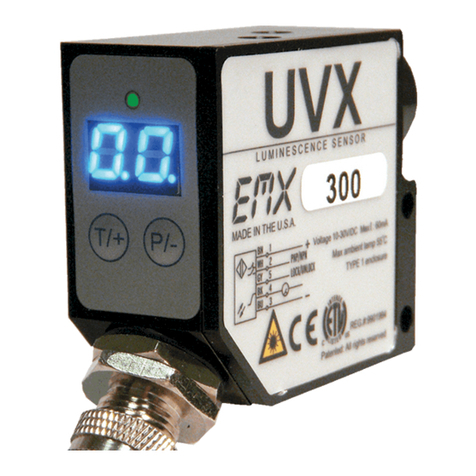
EMX Industries
EMX Industries UVX-300 User manual
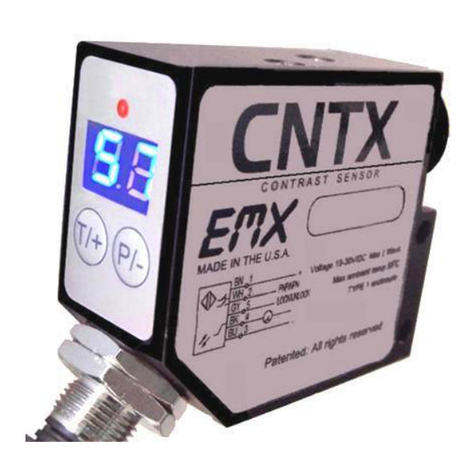
EMX Industries
EMX Industries CNTX Series User manual
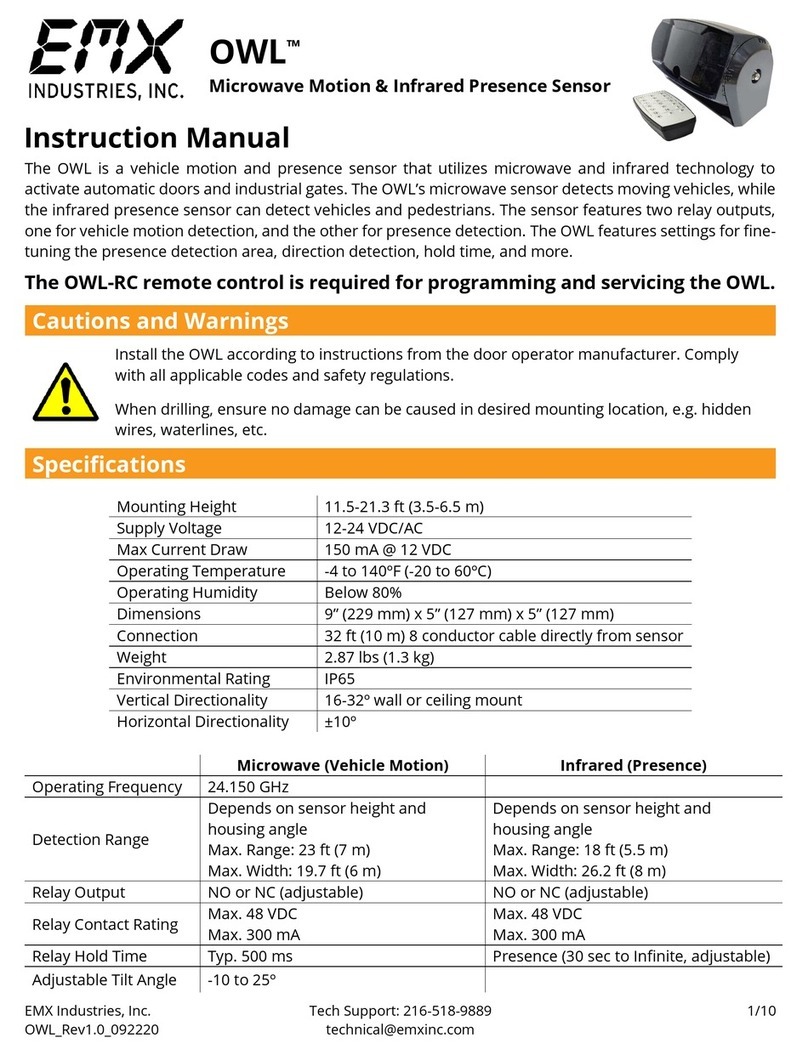
EMX Industries
EMX Industries OWL User manual
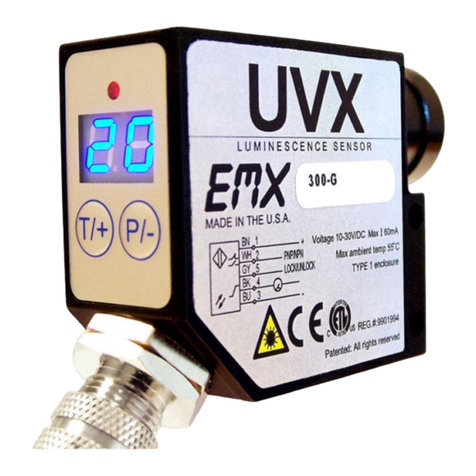
EMX Industries
EMX Industries UVX-300G User manual
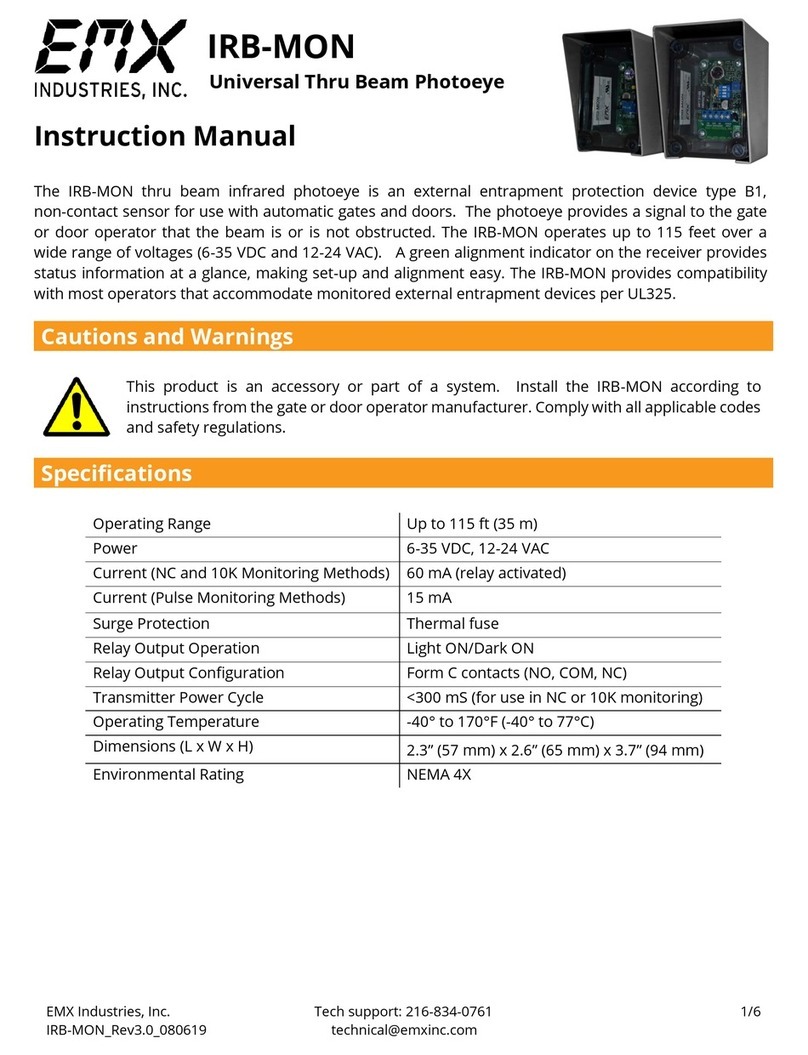
EMX Industries
EMX Industries IRB-MON User manual
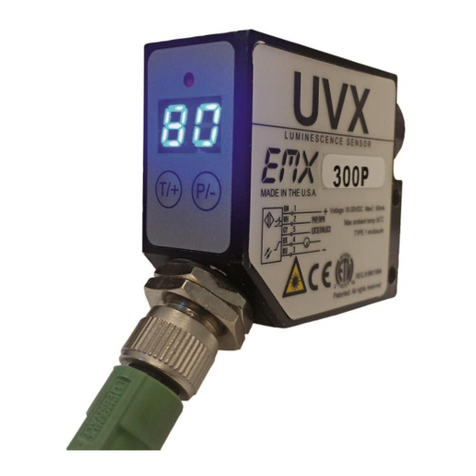
EMX Industries
EMX Industries UVX-300P User manual
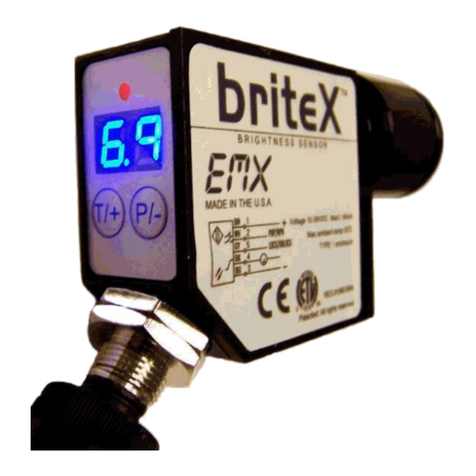
EMX Industries
EMX Industries BriteX 1000P User manual

EMX Industries
EMX Industries UVX-300G-C User manual
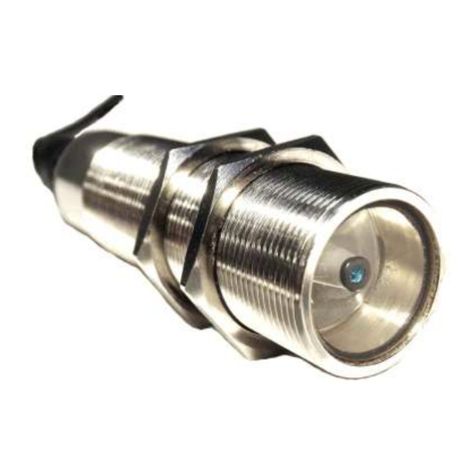
EMX Industries
EMX Industries ColorMax CM1000-1-4 User manual
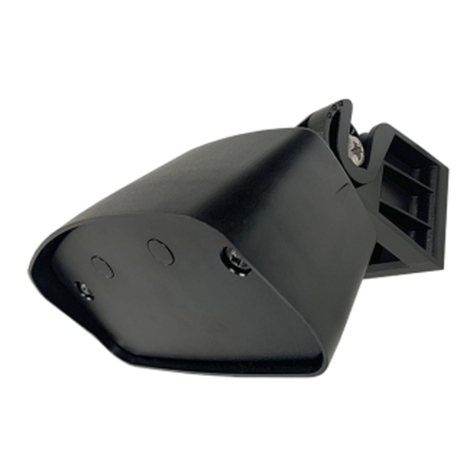
EMX Industries
EMX Industries RAVEN User manual


